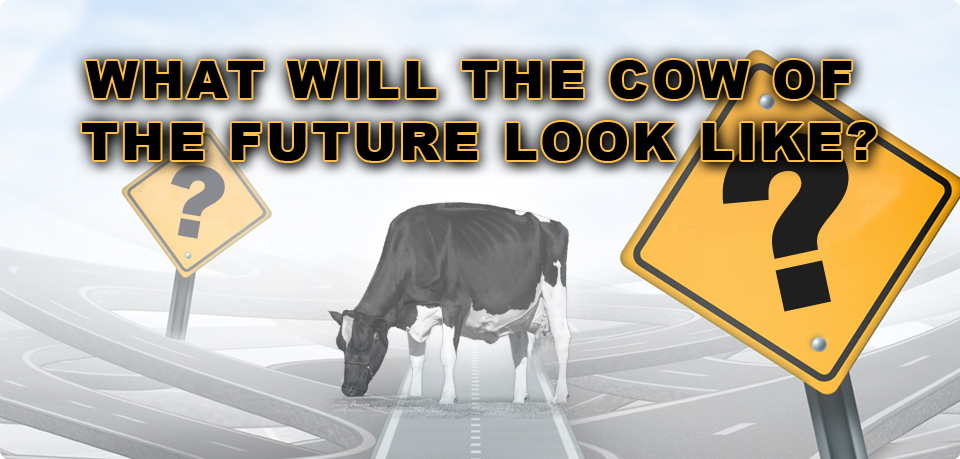Will she score 95 points? Will she produce 40,000lbs per year? Will the cow of the future be polled? Will she produce less methane gas? In the future, consumer demand will shape everything about dairy farming, including what the dairy cow will look like. Dairy consumption in emerging economies is rising fast. In China alone it will triple by 2020. As rice-paddies turn to pasture, breeder goals and ultimately the makeup of the modern dairy cow will change.
Over the past decade in North America, total milk production has increased in concert with the increased demand for dairy products from growing populations and increasing exports. This increase in production was achieved without increasing cow numbers, which have held steady, or slightly decreased, for nearly two decades. Production efficiency has therefore increased substantially with average production currently at 21,000 lbs. per cow per year.
While many things have contributed to the gain in production efficiency, one key area has been genetics. One of the biggest changes in the genetics market has been the use of genomics. Genomics has brought greatly increased reliability to estimated breeding values and is drastically decreasing the interval between generations (To read more check out The Genomic Advancement Race – The Battle for Genetic Supremacy). The next steps will be health traits and profitability and not just the ones that we are currently evaluating. We are getting ready to delve into better understanding of reproductive issues such as which cows are more efficient at converting feed to milk production (To read more check out Holstein vs. Jersey: Which Breed is More Profitable). Also rising on the priority list will be disease resistance (to read more check out Your Cattle Are Under Attack) and ultimately which cows are the healthiest, trouble free and most profitable.
As the revered management guru, Peter Drucker, says, “You cannot improve what you cannot measure.” Even though the dairy industry has a great system for evaluation production and conformation, there is much needed improvement in the areas of profitability and herd health. These areas were once thought to be low heritability however, with genomics, traits such as somatic cell, and immune response can greatly impacted at the genomic level. With Pfizer a company very focused on animal health now offering genomic testing, it’s only a matter of time before there is greater measurement in these areas.
This first steps in any effective improvement program requires accurate measurement. While many conformation traits and overall production traits are measured intensely when you look at overall measurement of cow –by-cow profitability, there are some major gaps. One of the biggest is accurate feed conversion metrics. While there have been studies by breed vs. breed comparison, there is a much greater need to take this analysis to the cow by cow and ultimately the genetics evaluation level.
The other day I was talking with a human geneticist about the use of genomics and ultimately the ability for genomic manipulation of a population. One of the key things he pointed out to me was how the dairy cattle industry really has the ability to lead the way when it comes to genomic advancements. Not because of the ethics issues, which we will leave for another forum, but rather because the dairy industry already has such a system in place for evaluation of the progeny. This ability to measure the exact effects of the manipulation will greatly accelerate the advancement process.
The Bottom Line
Over the years we have started to see less emphasis on stature, and increased focus on feet and legs and mammary systems. The cow of the future, will not just be about their conformation, but rather their ability to efficiently convert feed and their resistance to disease. With companies with the size and resources of Pfizer or their newly formed Zeotis entering the marketplace offering genomic tests, and maybe ultimately genomically modified cattle, the future may come much quicker than most breeders expect. So what will the cow of the future look like? We do not know exactly, but she will no doubt be the one that returns the most profit to her owners. All this will be driven by consumer demand.
Not sure what all this hype about genomics is all about?
Want to learn what it is and what it means to your breeding program?



















Leave a Reply
You must be logged in to post a comment.